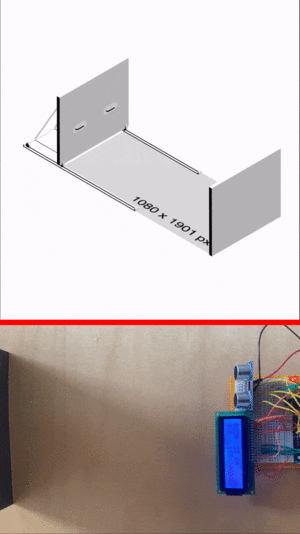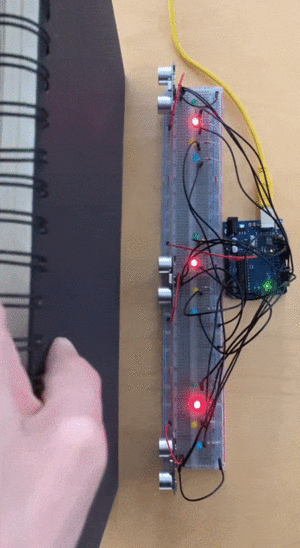Martin (XPUB)-project proposal: Difference between revisions
| Line 80: | Line 80: | ||
===<p style="font-family:helvetica">Relation to a larger context</p>=== | ===<p style="font-family:helvetica">Relation to a larger context</p>=== | ||
<b> | <b>Curatorial Practice</b> / <b>Software Art</b> / <b>Media Critique</b> / <b>Human Sciences / <b>Cybernetic</b> </b> | ||
===<p style="font-family:helvetica">References</p>=== | ===<p style="font-family:helvetica">References</p>=== | ||
Revision as of 09:58, 10 November 2021
What do you want to make?
I want to suggest a physical experience of the Web by creating an IRL exhibition space, conceived on the model of a user Web window interface ( SpaceWidth & SpaceHeight = WindowWidth & Windowheight). Comparable to a cursor, the spectator can move (supposedly) freely inside the space as well as resizing it by pushing or pulling a movable wall (SpectatorX / SpectatorY = MouseX / MouseY). Altering the size of the exhibition space will, unpredictably, affect various potential display factors such as the lighting, sound, projection format, information layout, etc. In this work, the space(s) is/are the main subject(s) to reflect on and to experience.
How do you plan to make it?
While working with Arduino and Rasperry Pi, my strategy is to start from the smallest and most simple prototype, and gradually increase the scale and technicality until reaching human scale (see: prototyping). By creating movable wall(s) fixed on rails and attached to distance sensors and Wi-fi transmitters (see schema), I am creating an elastic space that will react in a more or less predictable way to the alterations engaged by the User/spectator and its own movments within this space. (see: simulation)
What is your timetable?
- 1st semester Prototyping with Arduino all long, getting started with Raspery, and finding a space to set up
- 1st prototype: mini arduio + light sensor (understanding arduino basics) [[1]]
- 2nd prototype: arduino uno + utlrasonic sensor (working with ultrasonic sensors) [[2]]
- 3rd prototype: arduino uno + utlrasonic sensor + LCD screen (working with values display) [[3]]
- 4th prototype: arduino uno + utlrasonic sensor + 2 LEDS (working with in-between distance range values detection) [[4]]
- 5th prototype: arduino uno + 3 utlrasonic sensor + 3 LEDS (mapping range values detection in a grid and attributing signals with LEDS) [[5]]
- 6th prototype: arduino uno + 3 utlrasonic sensor + 12 LEDS (mapping range values detection in a grid and attributing signals with more LEDS) [[6]]
- 7th prototype: arduino uno + 3 utlrasonic sensor + 1 buzzer + 1 LCD + 1 Potentiometer (adding audio signals to the range value detection) [[7]]
- 8th prototype: arduino uno + 3 utlrasonic sensor + 1 buzzer + 1 LCD + 1 Potentiometer + mini breadboard (separating sensors from each others) [[8]]
——————————— NOW —————————————————————————————————————————————————————————————————————————————
- Upcoming: arduino uno + 3 utlrasonic sensor + 5V Relay + Lamp (controlling a lamp with arduino)
- Upcoming: arduino uno + 3 utlrasonic sensor + ESP8266 (WIFI) + Rasperry Pi (Self hosted website) (transmit or/and control value from arduino to computer and vice versa via WIFI transmitter)
- Upcoming: small room + arduino uno + 8 utlrasonic sensor + ESP8266 (WIFI) + Rasperry Pi (expending the prototype to human scale)
- 2nd semester: Find what will be graduation space and translate the installation to human/spectator scale.
- Show prototype and schemas of the wall to wood and metal workshops in order to get advices until final validation to build (starting to build physical elements)
- Search, find and validate what will be the space used for the installation during the graduation.
- Start building of the movable wall by considering the characteristic of the space used for graduation.
- Implement the sensors inside the movable wall, and the other devices in the fixed space
Why do you want to make it?
In its early ages, the Web borrowed terms and objects from the physical world in order to make its own concepts more familiar to its users. Now, largely democratized and widely spread in modern society, I would like to reverse the process and get inspired by the concepts deriving from Web interfaces in order to facilitate a new experience and understanding of the physical exhibition space, hence conceiving it as a device. By merging these spaces' respective properties, (sustainable vs obsolete; rigid vs elastic; digital vs physical; etc) they will reflect on each other which, coincidentally, invite the users/spectators to reflect on each of them. Conceiving the exhibition space as a Web interface and the spectator as a user is about puting together two layers of reality that are too often clearly seperated as two distinct worlds(IRL VS Online). This is about experiencing their ambiguities, similarities, and differences. (see: Reversing the desktop metaphor) More generally, it is about reflecting on media itself, and deal with the following paradox: The better a medium mediates, the more it becomes invisible and unconsidered. ( see: Mediatizing the media). This makes me want to give spectators more occasions to focus on what is containing, surrounding, holding or hosting a representation.
Who can help you?
- About the overall project
- Stephane Pichard, ex-teacher and ex-tutor in France
- Emmanuel Cyriaque: my ex-teacher and tutor, curating exhibition
- About Arduino
- Arduino Group (Lousia and other people interested into sharing knowledge and experiments about Arduino)
- Dennis de Bel who introduced me to Arduino and willing to answer to my questions
- Aymeric Mansoux is apparently a Arduino Wizard
- About Rasperry Pi
- XPUB2 students (Jacopo, Camillo, Federico)
- About creating the physical elements:
- Wood station (for movable walls)
- Metal station (for rails)
- Interaction station (for arduino/rasperyPi assistance)
- About theory/writting practice:
- Rosa Zangenberg: ex-student in history art and media at Leiden Universtity.
- Yael: friend and philosopher, curating exhibition and writting about the challenges of the exhibition space
- About finding an exhibiting space:
- Leslie Robbins
Relation to previous practice
During the first part of my previous studies, I have been gradually questioning the tools, formats and language that I was simply supposed to use as a graphic design student. As part of my previous graduation project, I wanted to reflect on the status of networked writing and reading, by programming my thesis in the form of Web to Print website. Subsequently, this website became translated in the physical space as a printed book, a set of flags, and a series of installations displayed in exhibition rooms that were following the distributed structure of my online thesis (home page, index, part 1-2-3-4) link. As a first year student of Experimental Publishing, I continued to work in that direction by eventually creating a meta-website, a geocaching pinball, triggering unconsidered Web events, as well as a Web oscillator reacting to the user screen-size and cursor position.
Relation to a larger context
Curatorial Practice / Software Art / Media Critique / Human Sciences / Cybernetic
References
- Stéphanie Moser, 2010. THE DEVIL IS IN THE DETAILS: MUSEUM - Displays and the Creation of Knowledge. 1st ed. Southampton, England
- Alexander R. Galloway - The Interface Effect 1st ed. Malden, USA: Polity Press.
- Jonas Lund, 2012. What you see is what you get
- Shilpa Gupta, 2009 - 2010. Speaking Wall
- Frederick Kiesler, 1925, City of space
- Brendan Howell, 2017(?) - The screenless office


